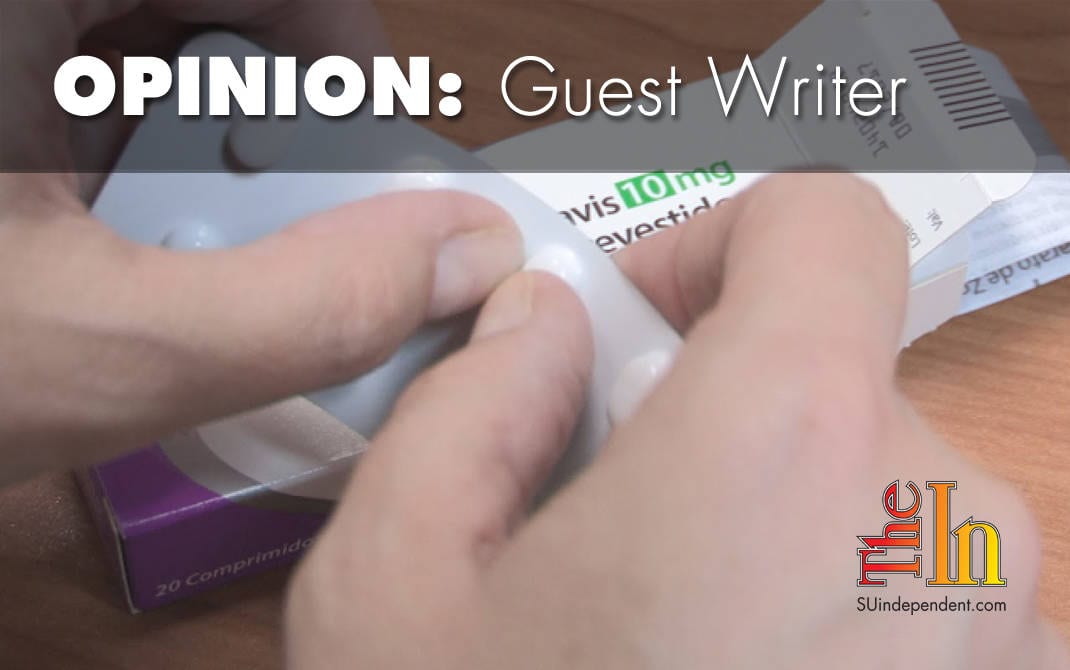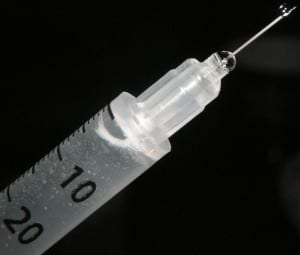
Written by Dr. Lynn R. Webster
Author’s note: “Emily” is a pseudonym, and she’s someone I know. I’ve changed just enough details of her story to protect her family’s privacy.
Four-year-old Emily had a rare form of cancer. She had received chemotherapy every week for about three months. She also had to bear frequent painful procedures. Emily’s mother, Sally, vicariously experienced some of the same pain, knowing that her daughter might not live.
For physicians, the challenges of treating children include being cognizant of the parents’ feelings and concerns as well. A child commonly reflects a parent’s perception of pain or anxiety.
The cancer was eating Emily’s bones like maggots eating dead tissue. The excruciating pain emanated from her spine and long bones. Due to the persistent pain, Emily was placed on OxyContin. But she had another type of pain that wasn’t helped by this medication. This pain had a sharp, piercing character—what we call lancinating—and its sudden onset would often last only a few minutes. During these episodes, Emily would scream. Sally asked if there was a way for the spikes of pain to be treated. So intravenous morphine was administered when Emily was at the hospital and cried with lancinating pain.
 On a cold winter day, Emily was hospitalized for more chemotherapy. Emily asked the nurse for a morphine injection. Although still on her OxyContin, Emily had been asking for morphine with increasing frequency. It didn’t appear to the nurse that Emily was in more pain than usual at that moment, but she complied with Emily’s request, attaching the syringe to the IV port and beginning a slow injection.
On a cold winter day, Emily was hospitalized for more chemotherapy. Emily asked the nurse for a morphine injection. Although still on her OxyContin, Emily had been asking for morphine with increasing frequency. It didn’t appear to the nurse that Emily was in more pain than usual at that moment, but she complied with Emily’s request, attaching the syringe to the IV port and beginning a slow injection.
“Push it fast,” Emily begged.
“Why?” the nurse asked.
“Because it makes me feel good.”
This was an unexpected response, and when I heard about it, it caught my attention. Emily certainly was experiencing physical pain, but is it possible she was asking for a particular experience to blunt emotional pain as well? This type of desire is common in adults, who will sometimes use opioids to cope with their emotional struggles as well as to relieve pain.
Until I heard Emily’s story, I would have disbelieved that a child would seek such an effect. Now, I am not so sure.
Of one thing I am certain: Emily made her request in innocence and without guile. The four-year-old is not a “drug addict.” But her very naivete reveals how opioids such as morphine may become a trap for a vulnerable person.
Opioids are meant for relief of physical pain. Using them to mask emotional pain can lead to great harm. If a four-year-old child can have emotional pain that supersedes her physical pain, we can be certain this human need is not an anomaly.
It may not be possible for newborns and children to be “addicted,” but we do not have to be an adult to develop a desire to feel good that could be harmful.
This insight can help people in pain by illustrating that there can be a slippery slope when using these powerful medications. Relieving physical pain may be the reason to initiate opioid use, but if its use is continued in order to relieve emotional suffering, it can lead to disaster. People must be cautious of this mistake.

Ilmicrofono Oggiono / CC BY 2.0
This insight can help physicians by revealing that a subset of patients may initially benefit from an opioid but that opioid use can evolve into treating symptoms other than pain. They, therefore, might use opioids more judiciously. That means asking insightful questions and monitoring patients’ use more closely while he or she is taking opioids.
How can Emily’s story help policymakers and regulators? By knowing that—whatever laws or regulations are implemented—if opioids are the only treatment for moderate to severe pain, they will be used for the wrong reasons. If an innocent, dying child seeks blissful relief, then it should be clear that, to prevent this from occurring, there must be equally effective alternative therapies available and affordable. As part of our healthcare transformation, new effective, and safe therapies must be a priority of the FDA, Congress, and the National Institutes of Health. Until then, physicians, patients, society, and legislators will struggle with finding a balance between providing pain relief and preventing the misuse of opioids.
Lynn R. Webster, MD, was previously president of the American Academy of Pain Medicine, Vice President of Scientific Affairs at PRA Health Sciences, author of “The Painful Truth,” and producer of a TV documentary by the same name. He lives in Salt Lake City.




I’m surprised at the large amounts of slanted and biased information I just read. Please, I think you would be much better at your attempts to make the world a better place, which I truly believe you want to do, if you took a moment to consider the other side. Not once did I read anything about people (patients) who are in chronic and debilitating chronic pain, being included in addressing the opioid abuse epidemic. How did you think you’d get accurate information when leaving out those people? And yes, we’re people, too. You’ve excluded an entire population. The vast majority of us would love it if we didn’t have diseases to which there’s no treatment or cure. And haven’t you heard stories of what it’s like for someone dying of cancer?
You are doing a disservice to your readers by using a broad brush approach, in the interest of trying to educate, or “toot your own horn”? It would take too much time for me to respond to every comment, that’s wrong and/or misleading in these anti-opioid articles. I would like to offer myself as a resource, so that you can hear from the people you left out, the people you must not think are important, the people who have had their opioid medication reduced or taken away completely, and the people who have died from suicide…..their only option for pain relief since the abuse crisis began.
It would also be proper and honest to present the data regarding the cause for overdoses and deaths more accurately. We all know that the figures reported by the CDC weren’t accurate…we know that often it was street drugs, like fentanyl from China, and or heroin. That’s not from an opioid prescription. It’s not as a result of people, like me, who need opioid prescriptions for pain relief.
I respectfully suggest that you remember this for your future work regarding opioids. Not everyone is an addict. We are grandmothers, mothers and spouses. Most prescriptions are taken by as prescribed, like responsible adults.